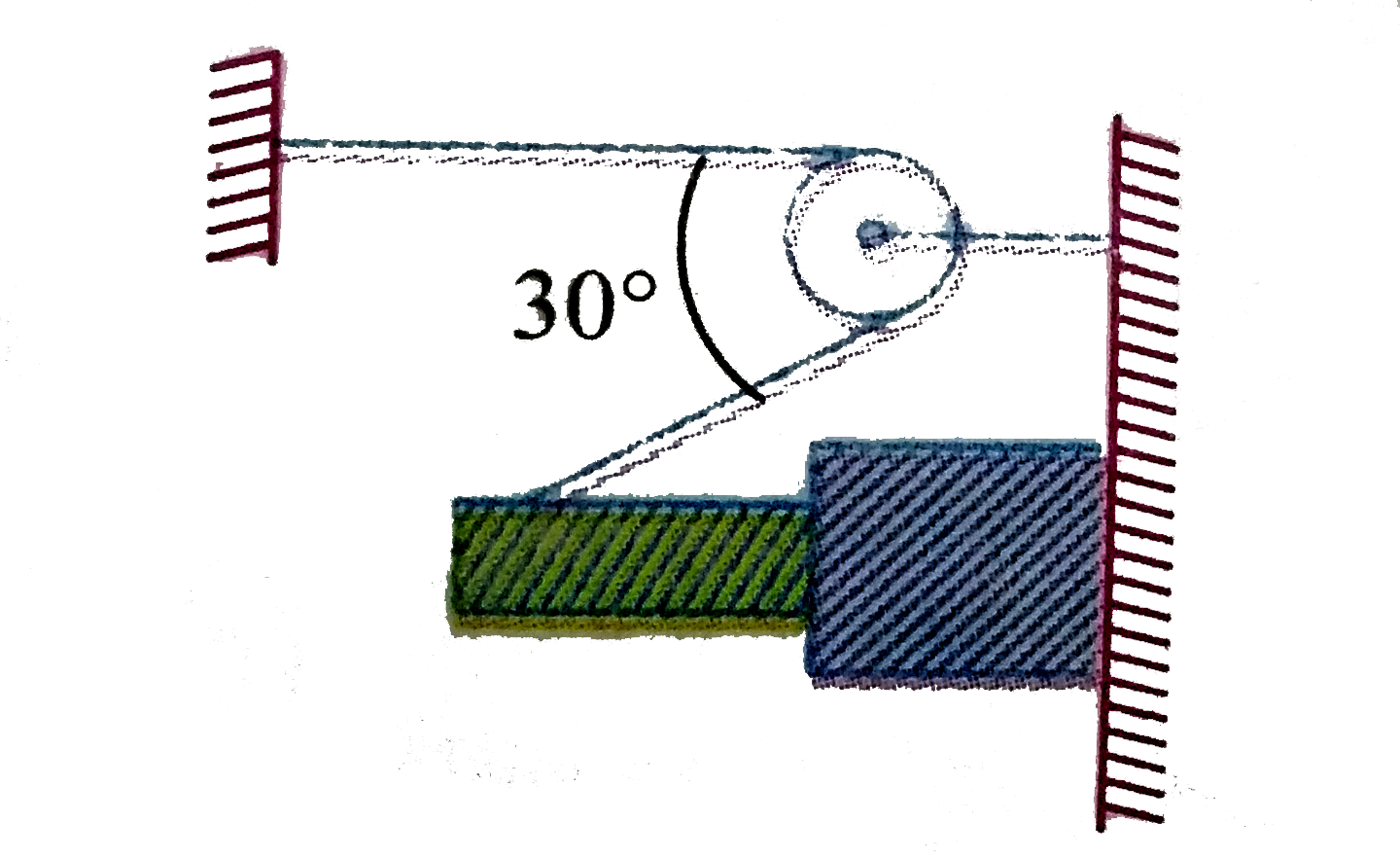Two lenses (1) and (2) with R1=R2=0.20m each are made from glasses with μ1=1.2andμ2 = 1.6 respectively. The two lenses with a separation of 0.345 m are submerged in a liquid with μ1=1.4. The focal lenghts of (1) and (2) are found. An object is placed at a distance of 1.3m from lens 1.
The location of the image while system remains inside the liquid is :
6.52 m
5.60 m
0.56 m
12.67 cm
The correct Answer is:B
(b) for lens 1 , u = - 13 m
f1=−70cm
= - 70 m
1v−1u=1f1
u = - 0.455 m
for lens 2 : u = 0.345 - 0.45 = - 0.8 m
1v−1u=1f2v=5.6
Topper's Solved these Questions
- RAY OPTICSBOOK - MODERN PUBLICATIONCHAPTER - RAY OPTICSEXERCISE - MULTIPLE CHOICE QUESTION LEVEL - III
16 Videos
- RAY OPTICSBOOK - MODERN PUBLICATIONCHAPTER - RAY OPTICSEXERCISE - RECENT COMPETITIVE QUESTION
32 Videos
- RAY OPTICSBOOK - MODERN PUBLICATIONCHAPTER - RAY OPTICSEXERCISE - RECENT COMPETITIVE QUESTION
32 Videos
- PROPERTIES OF MATTERBOOK - MODERN PUBLICATIONCHAPTER - PROPERTIES OF MATTEREXERCISE - RECENT COMPETITIVE QUESTIONS
17 Videos
- ROTATIONAL MOTIONBOOK - MODERN PUBLICATIONCHAPTER - ROTATIONAL MOTIONEXERCISE - RCQ
8 Videos
Similar Questions
Two symmetric double convex-lenses L1andL2with their radii of curvature 0.2m each are made from glasses with refractive index1.2and1.6resepectively .The lenses with a seperation fo 0.345m are subsmerged in a transparent liquid medium with a refractive index of 1.4.Find the focal lengths of lensL1andL2 .An object is placed at a distance of 1.3mfromL1,find the location of its image while the whole system remains inside the liquids
View SolutionA concave lens with unequal radii of curvature made of glass (μg=1.5) has a focal length of 40cm. If it is immersed in a liquid of refractive index μ1=2, then
View Solution
Knowledge Check
Two equal masses m1=m2 = 1 kg are kept on an inclined plane with an initial separation of 0.4 m. The coefficients of friction μ1 and μ2 for the blocks m1 and m2 with ground are 0.1 and 0.2 respectively. If the collision between the two blocks is completely inelastic.
 AThe loss in kinetic energy is 0.16 J.BThe loss in kinetic energy is 0.2 J.CThe speed of m1 just after collision is 4.8 m/s.DThe speed of m2 just after collision is 5 m/s.
AThe loss in kinetic energy is 0.16 J.BThe loss in kinetic energy is 0.2 J.CThe speed of m1 just after collision is 4.8 m/s.DThe speed of m2 just after collision is 5 m/s.Two identical glass (μg=3/2) equi- convex lenses of focal length f each are kept in contact. The space between the two lenses is also filled with water (μg=4/3). The focal length of the combination is
A4f/3B3f/4Cf/3DfAn object is located 4cm from the first of two thin converging lenses of focal lengths 2m and 1m. Respectively. The lenses are separated by 3m. The final image formed by the second lens is located from the source at a distance of
 A8MB5.5mC6mD6.5
A8MB5.5mC6mD6.5
There are two blocks of masses m1 and m2,m1 is placed on m2 on a table which is rotating with an angular velocity ω about the vertical axis . The coefficent of friction between the block is μ1 and between m2 and table is μ2(μ1<μ2) if block are placed at distance R from the axis of ratation , for relative sliding between the surface in contact , find the
a. friction force at the contacting surface
b. maximum angular speed ω

View SolutionThere are two blocks of masses m1 and m2,m1 is placed on m2 on a table which is rotating with an angular velocity ω about the vertical axis . The coefficent of friction between the block is μ1 and between m2 and table is μ2(μ1<μ2) if block are placed at distance R from the axis of ratation , for relative sliding between the surface in contact , find the
a. friction force at the contacting surface
b. maximum angular speed ω

View SolutionA convex lens of focal legnth 0.2m and made of glass (μ=1.50) is immersed in water (μ=1.33). Find the change in the focal length of the lens.
View SolutionA concave lens with unequal radii of curvature made of glass (μg=1.5) has a focal length of 40cm. If it is immersed in a liquid of refractive index μ1=2, then
View SolutionTwo blocks with masses M1 and M2 of 10kg and 20kg respectively are placed as in fig. μs=0.2 between all surfaces, then tension in string and acceleration of M2 block will be:

View Solution
